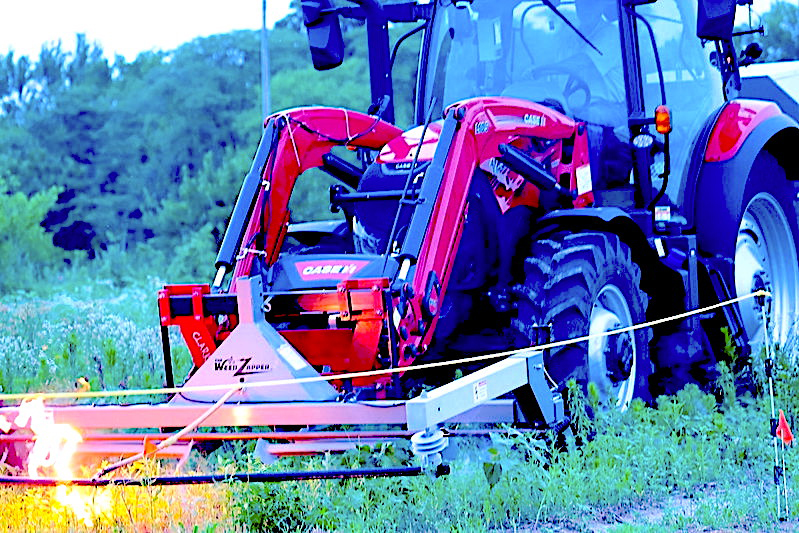Shocker! Weed electrocution research sparks interest as herbicide resistance impedes current methods

By LINDA GEIST
University of Missouri Extension
COLUMBIA, Mo. – Move over, herbicides. There’s a new sheriff in town, and he’s toting powerful guns loaded with electricity to kill weeds.
This shocking new method of weed control recently was demonstrated at the 2021 Pest Management Field Day at the University of Missouri Bradford Research Center in Columbia.
As more weeds develop resistance to herbicides, electrocution may be the weed management approach of the future, says MU Extension weed scientist Kevin Bradley. MU graduate student Haylee Schreier has studied weed electrocution in row crops for the past two years under Bradley’s direction.
The is of special interest to Bradley, because it might be the answer to Missouri’s growing water hemp problem. A prolific producer of seeds, water hemp is Missouri’s No. 1 weed problem and one of 14 weeds that are herbicide-resistant.
Two brothers in Illinois with backgrounds in farming and engineering designed The Weed Zapper machine. A different pair of brothers purchased the technology and manufacture Weed Zappers at a plant in Sedalia, Mo.
The Weed Zapper model used in MU research has a copper boom that attaches to the front of a tractor. Driven by a PTO, it hits weeds with 15,000 volts of electricity from a 110,000-watt generator on the back of the tractor. Models cost between $42,000 and $72,000.
Metal wheels are grounded, and booms adjust to different heights. Tractor speed is about 2-4 miles per hour, Bradley says. Weed kill is best at lower speeds and is even more effective on some of the more challenging weeds when used at seven-day intervals in late summer.
Schreier’s data shows that by the end of the season there is almost complete control of giant ragweed, common ragweed, marestail and waterhemp. It is slightly less effective on grasses.
The growth stage of soybean and the degree of contact that the boom makes with the foliage influences soybean injury. Soybean yield loss is possible if the boom makes constant contact with the soybean canopy at growth stages R3 or later.
In addition to killing weeds, electrocution also affects viability of surviving weed seeds. The most impact is seen in waterhemp, where about 65% of seeds become nonviable.
Electrocution is not new to the weed management world, says Bradley. Sugar beet growers in North and South Dakota have been trying this method since the 1950s and 1960s.
The United Soybean Board, Missouri Soybean Merchandising Council and the Weed Zapper company are partners in this project.
Miss Clipping Out Stories to Save for Later?
Click the Purchase Story button below to order a print of this story. We will print it for you on matte photo paper to keep forever.

